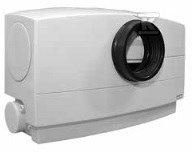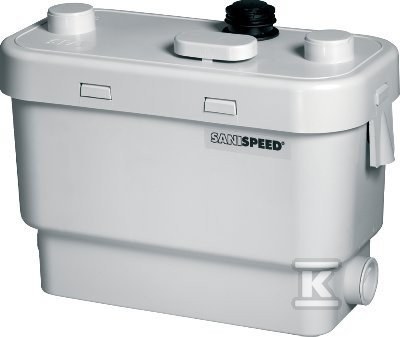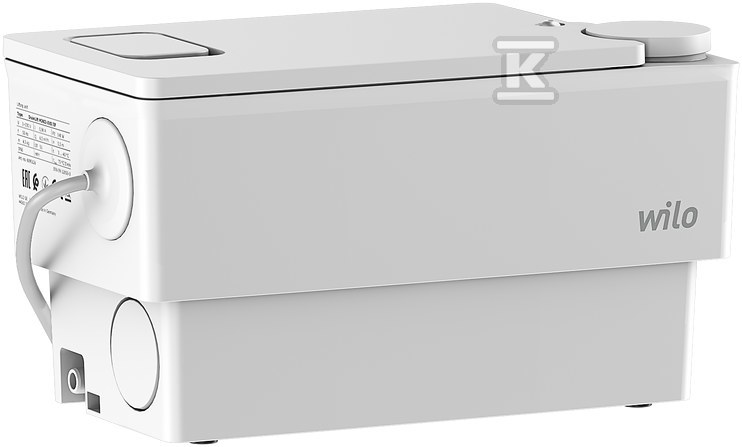Fat clogs are a very serious problem that can lead to various complications, such as blocking plumbing systems. If this happens, you have to reckon with high repair costs and the risk of a major breakdown. Clogs are caused when fats and oils settle on the walls of pipes, creating a hard barrier there. This makes it difficult for water to flow. To effectively prevent them, we should understand how clogs form, how to detect them, and how to deal with their removal. We will write about all of this in the article below.

Check out the shredder pumps at the Onninen wholesaler
How do grease clogs form in plumbing installations?
Internal sewage is a key element in the entire sanitary system, just like external sewage . Unfortunately, it is susceptible to the inconvenience of fat blockages. The oils and fats responsible for this appear especially in kitchen installations, as well as in catering establishments.
 At first, the grease seems harmless because it is liquid and quickly flows down the drain, but when it comes into contact with colder water, it hardens, creating a sticky layer on the walls of the pipes. Over time, it gets worse because this layer builds up, and its structure attracts other particles, such as food residue, fibers, mineral deposits, etc. This makes it even more difficult to flow.
At first, the grease seems harmless because it is liquid and quickly flows down the drain, but when it comes into contact with colder water, it hardens, creating a sticky layer on the walls of the pipes. Over time, it gets worse because this layer builds up, and its structure attracts other particles, such as food residue, fibers, mineral deposits, etc. This makes it even more difficult to flow.
And this process is accelerated even more when the sewage system is rarely cleaned. The way it is designed also has an impact - when there are many bends and narrowings in it, it promotes the accumulation of organic substances. The sewage pipe in such places can become completely blocked, leading to sewage backflow and increasing the risk of serious failures. This is why taking care of regular cleaning of the installation is so important. We will say the same about avoiding pouring grease down the sink.
Correct detection of grease blockages in hydraulic systems
Remember that when it comes to fat embolisms, time is of the essence. If we detect them at an early stage, we increase the chance that we will avoid more serious failures and thus costly repairs.
 Typical first symptoms include slow water drainage or unpleasant odors coming from the drain. It can also be gurgling in the pipes. However, to be sure of the presence of a fat blockage and at the same time precisely determine its location, it is often necessary to use specialist tools.
Typical first symptoms include slow water drainage or unpleasant odors coming from the drain. It can also be gurgling in the pipes. However, to be sure of the presence of a fat blockage and at the same time precisely determine its location, it is often necessary to use specialist tools.
For this purpose, professionals use inspection cameras. They allow you to look inside the pipes, so you can assess the scale of the problem. Such devices are equipped with LED lighting and a camera, which means they can send the image directly to a monitor.
This allows detection of not only fatty deposits but also other potential obstructions. This diagnostics allows precise planning of corrective actions, such as cleaning the pipes or using grease-dissolving agents.
How to effectively remove grease clogs from plumbing installations?
To effectively remove grease blockages, you need appropriate methods, such as those that will break down or dissolve the sediment that accumulates on the walls of the pipes. Very often, specialist chemicals are used. Their task is to dissolve the grease, which allows it to drain away with the water. However, such agents must be used with caution, because they can damage more delicate elements of the installation.
 Another method is to use high-pressure water devices. A high-pressure water jet effectively breaks up blockages, removing both grease and other impurities. Importantly, this method is safe and non-invasive, which is why it is very popular among specialists who deal with maintenance of installations. If the blockages are really difficult to remove, mechanical spirals are also used, i.e. tools that allow for manual removal of sediment.
Another method is to use high-pressure water devices. A high-pressure water jet effectively breaks up blockages, removing both grease and other impurities. Importantly, this method is safe and non-invasive, which is why it is very popular among specialists who deal with maintenance of installations. If the blockages are really difficult to remove, mechanical spirals are also used, i.e. tools that allow for manual removal of sediment.
Sewer pipes, water supply networks and connections , as well as other system elements are susceptible to various damages. Some of them cause fat embolisms. To prevent them, we should remember about proper prophylaxis.